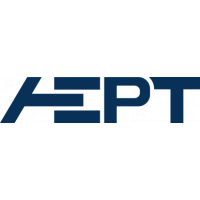A volume and a twin surface dielectric barrier discharge (VDBD and SDBD) are generated in different nitrogen–oxygen mixtures at atmospheric pressure by applying damped sinusoidal voltage waveforms with oscillation periods in the microsecond time scale. Both electrode configurations are located inside vacuum vessels and operated in a controlled atmosphere to exclude the influence of surrounding air. The discharges are characterised with different spatial and temporal resolution by applying absolutely calibrated optical emission spectroscopy in conjunction with numerical simulations and current–voltage measurements. Plasma parameters, namely the electron density and the reduced electric field, and the dissipated power are found to depend strongly on the oxygen content in the working gas mixture. Different spatial and temporal distributions of plasma parameters and dissipated power are explained by surface and residual volume charges for different O2 admixtures due to their effects on the electron recombination rate. Thus, the oxygen admixture is found to strongly influence the breakdown process and plasma conditions of a VDBD and a SDBD.
| Field | Value |
|---|---|
| Publisher | |
| Authors | |
| Release Date | 2021-01-29 |
| Identifier | 81654b14-f843-4e6c-81c3-cfe3f94e8074 |
| Permanent Identifier (URI) | |
| Is supplementing | |
| Plasma Source Name | |
| Plasma Source Application | |
| Plasma Source Specification | |
| Plasma Source Properties | For both the VDBD and the SDBD electrode configuration, a suitable vacuum vessel made of aluminium is used and connected to a miniature flow passage, which consists of KF25 vacuum parts. Both vessels provide optical access via several synthetic quartz windows, transparent in the spectral range from 200 to 1100 nm (Viosil SQ, GVB, Germany). Feed gas is supplied via two mass flow controllers (Bronkhorst El‐Flow Prestige, Bronkhorst, Germany). Nitrogen and oxygen (Air Liquide, Germany) with purity 5.0 are used as feed gas in this study. In detail, the different nitrogen–oxygen gas mixtures are chosen as follows: 1:0, 0.8:0.2, 0.5:0.5 and 0.2:0.8. The total gas flow amounts to 2 slm for the VDBD vessel and to 10 slm for the SDBD vessel. In both DBD setups, one electrode is grounded. High voltage (HV) pulse sequences, which correspond to a damped sine wave with a μs rise time, are applied to one of the electrodes. The trigger frequency is 1000 Hz for both DBDs in this study.
VDBD: A self‐built pulsed power supply is used for the VDBD setup. The electrode has a diameter of 10 mm and is placed in the middle of the vacuum vessel. The working distance between the driven and the counter electrode is set to 1 mm. The circular, counter electrode is made of aluminium and is covered by a glass slide.
SDBD: A customised modified Redline G2000 plasma generator with an external transformer is employed for the SDBD setup. The SDBD is made of an aluminium oxide plate (190 mm × 88 mm × 0.635 mm) functioning as a dielectric barrier with grid‐structured copper traces placed on each side of the dielectric. |
| Language | English (United Kingdom) |
| Plasma Source Procedure | Different nitrogen–oxygen gas mixtures were chosen: 1:0, 0.8:0.2, 0.5:0.5 and 0.2:0.8 at atmospheric pressure.
Total gas flow amounts to 2 slm for the VDBD vessel and to 10 slm for the SDBD vessel. |
| License | |
| Plasma Medium Name | |
| Plasma Medium Properties | Different nitrogen–oxygen gas mixtures were chosen: 1:0, 0.8:0.2, 0.5:0.5 and 0.2:0.8 at atmospheric pressure.
Total gas flow amounts to 2 slm for the VDBD vessel and to 10 slm for the SDBD vessel. |
| Plasma Medium Procedure | Before gas mixtures were changed, the vessel was completely evacuated, to minimise impurities. |
| Plasma Target Name | |
| Contact Name | F. Kogelheide |
| Plasma Target Properties | VDBD: The circular, counter electrode is made of aluminium and is covered by a glass slide. |
| Contact Email | |
| Plasma Diagnostic Properties | Capacitive voltage divider (P6015A; Tektronix)
Current monitor (Model 2877; Pearson Electronics)
Digital oscilloscope (LeCroy9459 DUAL 350 MHz; LeCroy)
Echelle spectrometer (ESA 4000; LLA Instruments, Germany)
Intensified charge‐coupled camera (ICCD, 4 Picos; Stanford Computer Optics)
Bandpass filter (380FIB50 and 390FIB50; Knight Optical, UK) |
| Public Access Level | Public |
| Plasma Diagnostic Name | |
| Funding Agency | |
| Project |


![[Open Data]](https://assets.okfn.org/images/ok_buttons/od_80x15_blue.png)